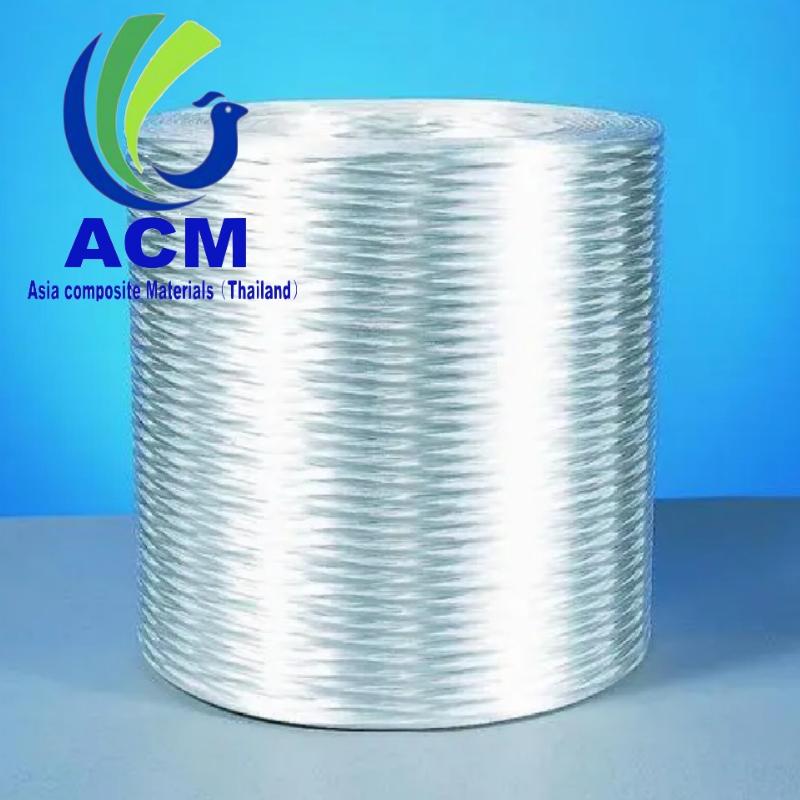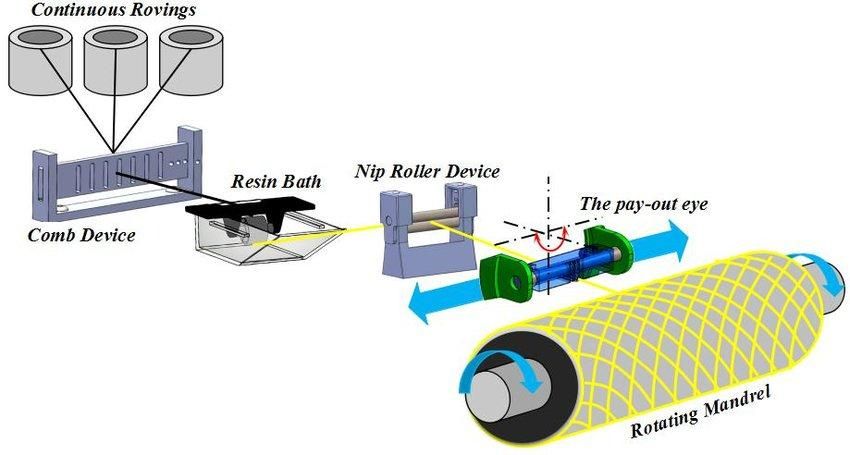
"Filament winding process" is a common manufacturing technique used for producing cylindrical structures, like pipes, tanks, and tubes, using composite materials. In this context, "fiberglass roving" refers to bundles of untwisted strands of continuous fiberglass fibers that are used in the filament winding process.
Preparation: The fiberglass roving is prepared by unwinding it from spools. The roving is then guided through a resin bath, where it's impregnated with the chosen resin (e.g., epoxy, polyester, or vinylester).
Winding: The impregnated roving is wound onto a rotating mandrel in a predetermined pattern. The winding pattern (e.g., helical or hoop winding) and the angle of winding are chosen based on the desired properties of the final product.
Curing: Once the winding is complete, the resin needs to be cured to harden and solidify the structure. This can be done at room temperature or in an oven, depending on the resin system used.
Release: After curing, the wound structure is removed from the mandrel, resulting in a hollow, cylindrical composite structure.
Finishing: The final product may undergo further processes like trimming, drilling, or coating, depending on its intended application.
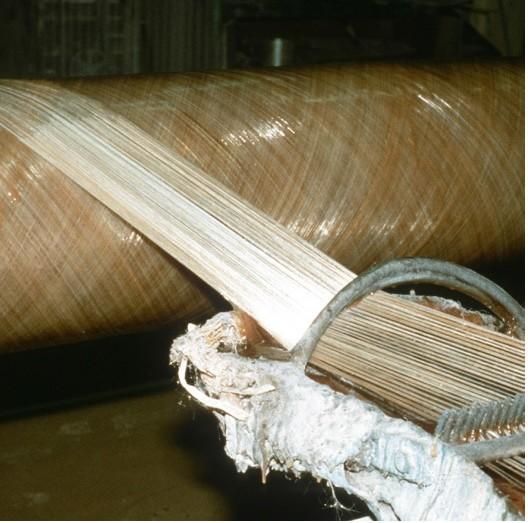
The filament winding process using fiberglass roving offers several benefits:
High Strength: Due to the continuous nature of the fibers and the ability to orient them in desired directions, the final product has high strength in those directions.
Customizability: The winding pattern and fiber orientation can be tailored to meet specific strength and stiffness requirements.
Economical: For large-scale production, filament winding can be more cost-effective compared to other composite manufacturing techniques.
Versatility: A wide range of products with different sizes and shapes can be produced.
Fiberglass roving is essential for the filament winding process, providing strength, flexibility, and cost-efficiency to the resulting composite products.
Fiberglass roving applicant in FRP pipe
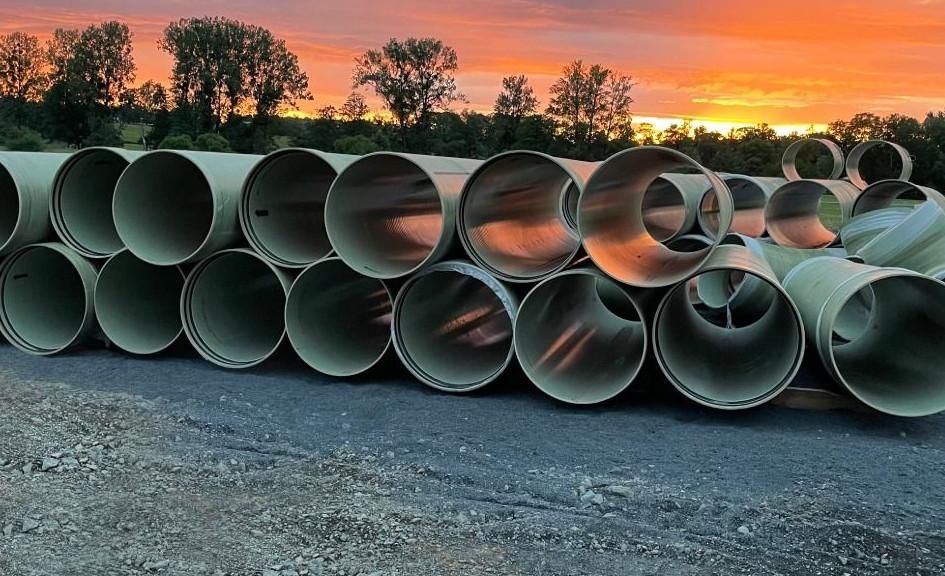
Reinforcing Material: Glass fiber is the most commonly used reinforcing material in FRP pipes. It provides the pipes with the required strength and rigidity.
Corrosion Resistance: Compared to many other materials, FRP pipes have superior corrosion resistance, mainly due to their glass fiber-reinforced structure. This makes FRP pipes particularly suitable for the chemical, oil, and natural gas industries, where corrosion is a major concern.
Lightweight Feature: Glass fiber-reinforced FRP pipes are much lighter than traditional steel or iron pipes, making installation and transportation much more convenient.
Wear Resistance: FRP pipes have excellent wear resistance, making them highly useful in fluid transport containing sand, soil, or other abrasives.
Insulation Properties: FRP pipes have good insulation properties, making them an ideal choice for the electricity and communication sectors.
Economic Aspect: While the initial cost of FRP pipes may be higher than some traditional materials, their long lifespan, low maintenance, and repair costs may make them more cost-effective in terms of overall life cycle costs.
Design Flexibility: FRP pipes can be customized to meet the requirements of specific applications, whether in terms of diameter, length, or thickness.
In summary, the application of glass fiber in FRP pipes provides many industries with an economical, durable, and efficient solution.
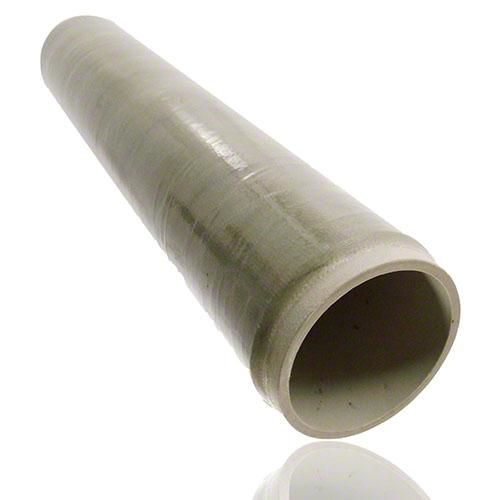
Why fiberglass roving in FRP pipe
Strength and Rigidity: Fiberglass roving provides FRP pipes with high tensile strength and rigidity, ensuring that the pipes maintain their shape and structural integrity under various working conditions.
Directional Reinforcement: Fiberglass roving can be placed directionally to provide additional reinforcement in specific directions. This allows FRP pipes to be customized for specific application needs.
Good Wetting Properties: Fiberglass roving has good wetting properties with resins, ensuring that the resin thoroughly impregnates the fiber during the production process, achieving optimal reinforcement.
Cost-Efficiency: Compared to other reinforcing materials, fiberglass roving is a cost-effective choice, providing the required performance without adding significant costs.
Corrosion Resistance: Fiberglass roving itself does not corrode, allowing FRP pipes to perform well in various corrosive environments.
Production Process: Using fiberglass roving simplifies and streamlines the production process of FRP pipes, as the roving can be easily wound around manufacturing molds and cured together with the resin.
Lightweight Characteristic: Fiberglass roving provides the required reinforcement for FRP pipes while still retaining a lightweight feature, making installation and transportation more convenient.
In summary, the application of fiberglass roving in FRP pipes is due to its multiple advantages, including strength, rigidity, corrosion resistance, and cost-efficiency.
Continuous filament winding process is that the steel band moves in back – and – forth circulation motion. The Fiberglass winding, compound, sand inclusion and curing etc process are finished at moving forward mandrel core at end the product is cut at requested length.

